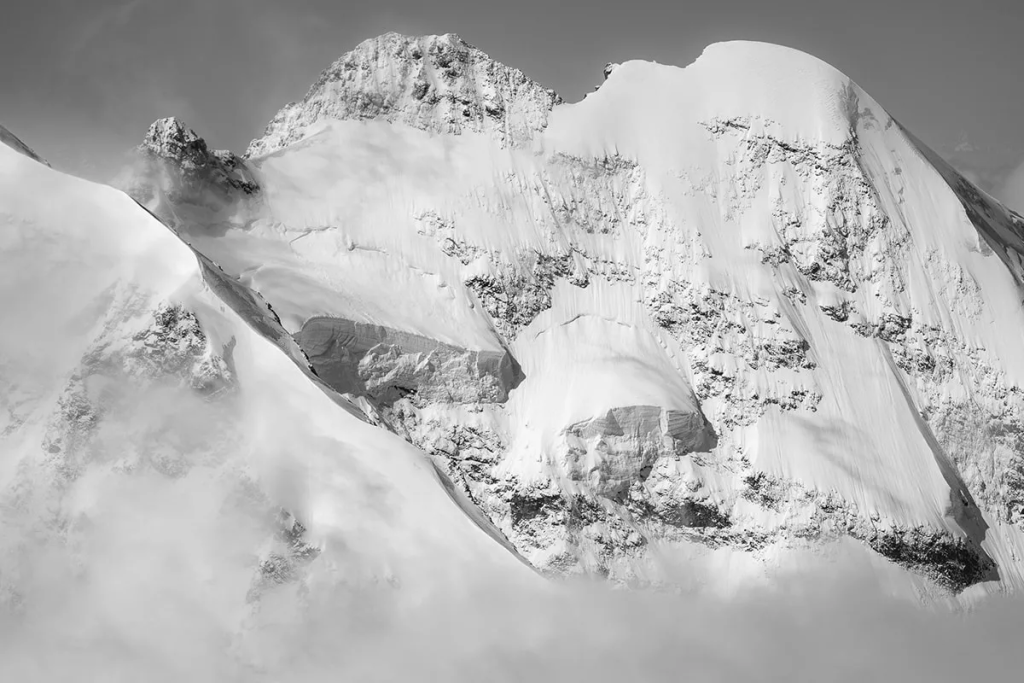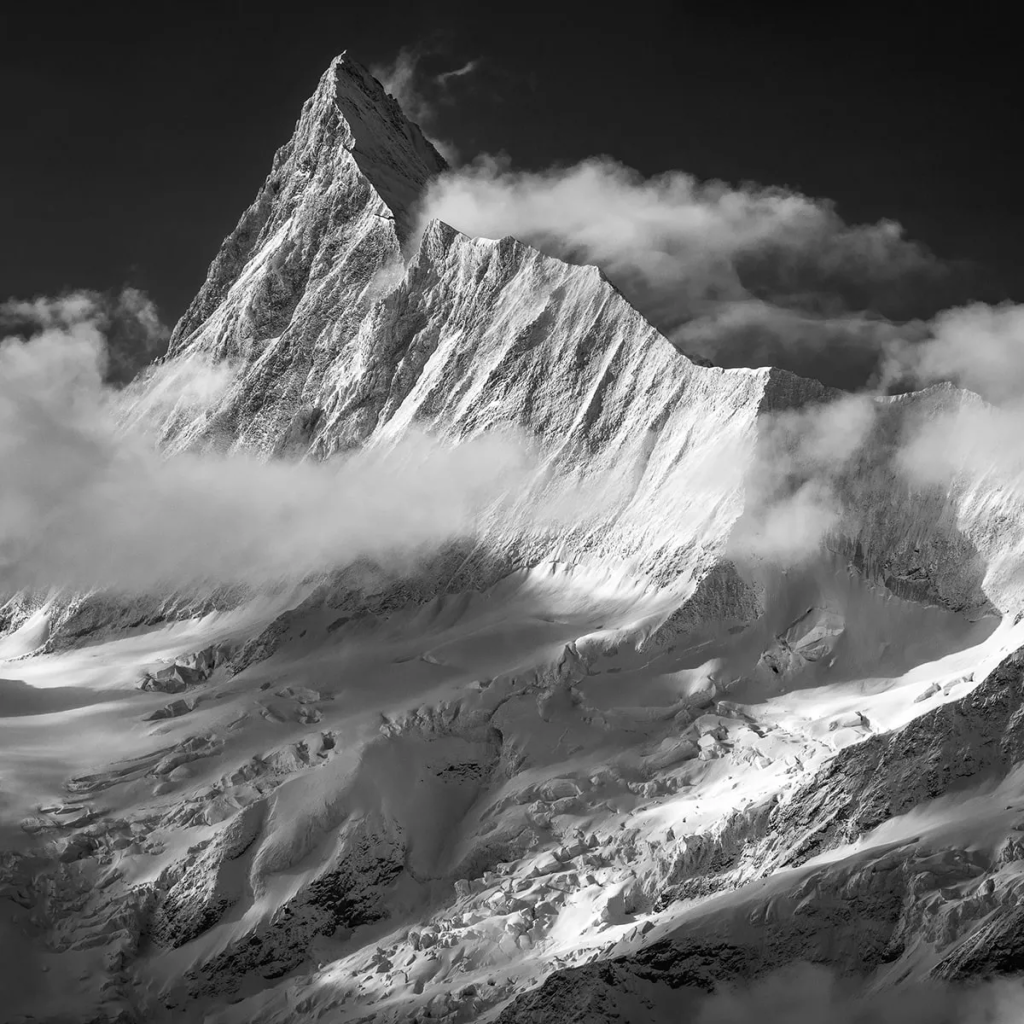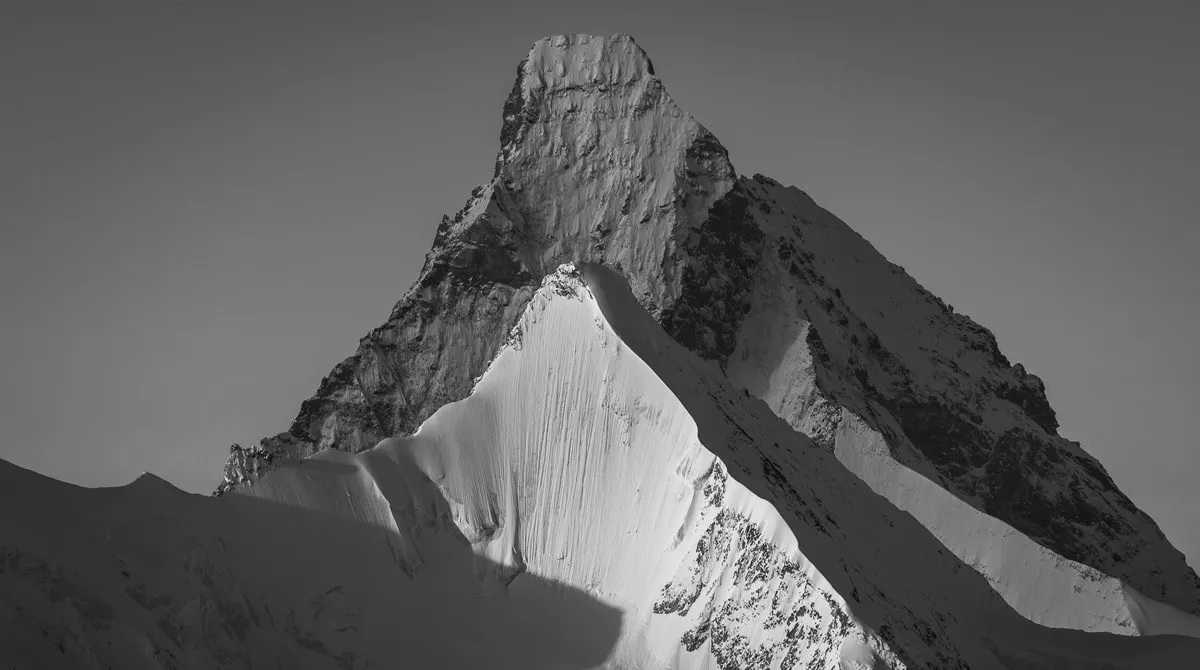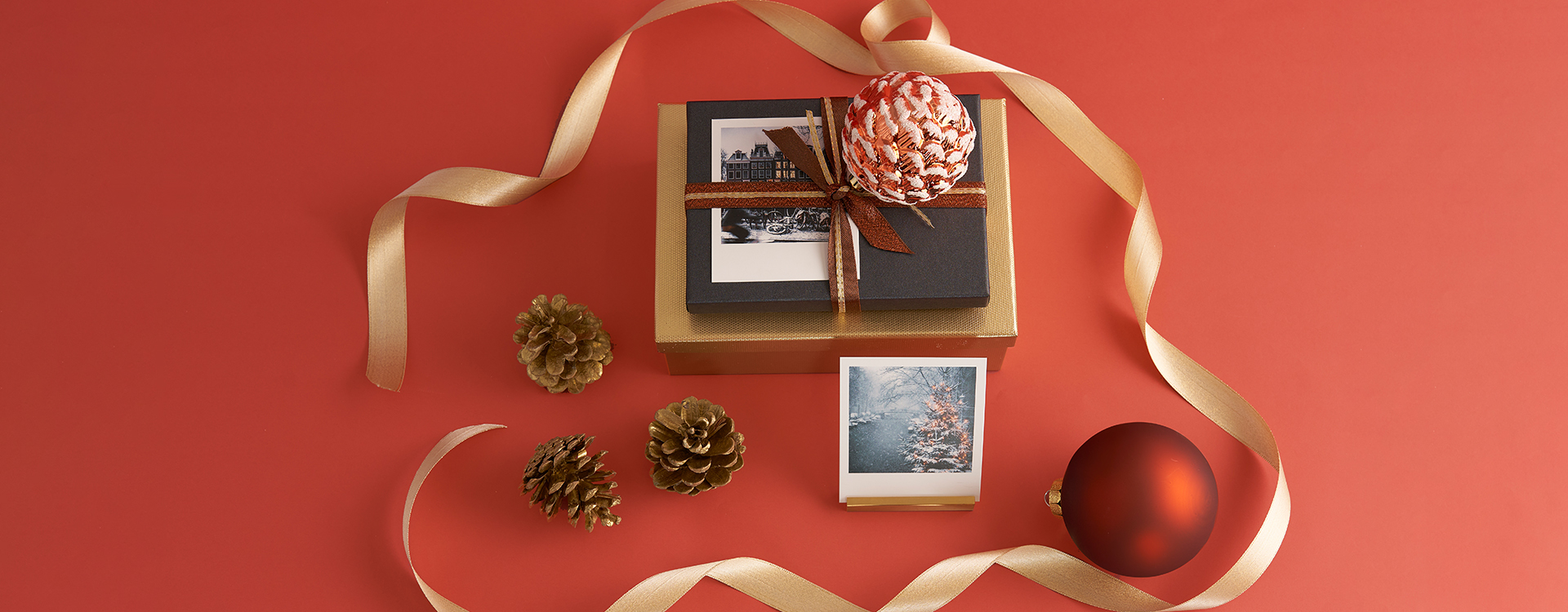Originally from Belgium, Thomas Crauwels surprisingly found his great passion in Switzerland: mountain photography. In his photographs he captures the breathtaking beauty of the Alps – preferably in supposedly bad weather. Only then does the contrast between rocks, snow, ice and clouds have a particularly impressive effect and trigger the desired feeling in him. He makes time documents of our nature to capture the transience.
We were allowed to ask him a few questions and are once again surprised how quickly a single moment can change the whole life.
Thomas, about a decade ago, you left flat Belgium for alpine Switzerland. So your love for the Alps is rather unusual, but all the more likeable.
Was there a decisive moment to which you owe your passion for mountains?
Actually I arrived in Switzerland for a personal reason, it was not linked to the mountains. In fact the alps was a universe totally unknow to me as well as photography. As I am very connected to nature, when I arrived at Geneva I quickly wanted to discover the mountains surrounding me. Of course, I was a real newbie, I tried to climb the mountain during winter with running shoes, it was not working so well at the beginning…
Then I managed to reach my first summit in the summer, “le Reculet” 1717 m, it was an incredible feeling of peace, liberty and personal satisfaction.
I wanted to share the beauty of Switzerland with my friends that were in Belgium and I bought a camera. Being equipped I was thirsty to make images and I started to hike a lot to discover the alps. I remember very well the day that changed everything to me.
It was in summer 2011 when I went to the cabane des Dix in Valais, the hike was really incredible, you go through all the alpine vegetation layers before reaching the mineral universe. From the hut you can see (what’s left of) the glacier of Cheilon and the Mont Blanc de Cheillon (an incredibly beautiful summit). Seeing that glacier and that rock summit with hanging glacier touched something very deep inside me, I knew instantly that my goal in life would be to photograph those landscapes.
Since then my mission has been to try to capture incredible atmospheres on the summits of the alps.

Biancograt, Roseg
What particularly appeals to you about black-and-white photography of alpine subjects? The Valais and Engadine have often been the model for your camera, what is the reason for this and what else is on your Swiss “bucket list”?
Black and white is something obvious to me, that’s the way I see the mountains. It’s all about the balance of contrast between the rocks, the snow/ice and the clouds. In BW I think that it’s easier to transmit emotions and it helps to me lead the viewer to feel the greatness and beauty that I want to share.
As a Belgian not having really known the snow except for 2 days per year I am really attracted by the highest summits of the alps with their glaciers and sharp faces. That’s why I have worked a lot on Valais, Oberland, Engadine and Chamonix, the places where the most incredible summits are located! Having worked those last 10 years on the highest summits I want to take time to work on the summit in lower altitude. I have already started but it’s really challenging for me… A tree even with a lot of snow on it doesn’t give me the same feeling than an hanging glacier!

Eiger – Mönch – Jungfrau “Château dans le ciel”
You describe yourself as the successor to the alpine painters and photographers of the 18th and 19th centuries. What attracts you to mountain photography and what messages do you want to send with your pictures? The power of nature? The human-induced change of the mountains? The spirit of adventure and longing?
At first I am doing it because it’s what I love to do in life and what I think I am meant to do. I can spend several days in my tent waiting the perfect conditions or walking several hours to go to a special viewpoint, the passion for the alps is giving me that energy.
I understood the meaning of my quest when global warming became an incontestable reality, you can’t deny it when you see faces falling down, glacier disappearing, etc… It became clear to me that beyond the beauty and greatness I want to transmit there is now a documentary and historical side to my work. All those places that inspire me are unfortunately changing and changing quickly!
We have a few snapshots of the 18th and 19th trough painting and the beginning of photography, I think that my work will be mentioned in the future to show how were the alps in this period of the humanity.

Eiger – Mönch – Jungfrau
As your photography has grown, so has your mountaineering ability. You have gone from being an experienced hiker to an alpinist. Have you also climbed the mountains that are your muses?
I have a special connection with the summits of the alps, especially the Matterhorn that is an endless source of inspiration. Every time I see him it gives me the feeling that it’s the first time we meet!
I do have a strong connection with the high summits of the alps, it’s really magnetic with those 4000 peaks. I know that the quest will never be over, there are always new shapes of clouds combined with special light and specifics snow conditions on the faces to capture.
Of course it’s asking a commitment, always being available for when you think that moment will happen, checking weather every day, several times a day, being fit, etc…
The more you commit yourself in a project the more you get connected to it.
After 10years of photography I have finally reached the maturity to go to the mountains for doing something else than photography. Last year I have started the climbing of the summits that I am shooting and had the chance to reach the Matterhorn summit and the other 4000 of the area. (I had the camera in my bag just in case but the goal was reaching the summit!)

Finsteraarhorn
Will there also be recordings from other countries to marvel at in the future?
I had the chance last year to discover the 6000 peaks of the Cordillera Huayhuash in Peru. A magnificent trek of 10days with incredible summits. Of course, I had my camera and made some pictures but those photos don’t have the same taste than the ones of the alps. I know that I could have done do so much better if I had stay several months on the area…
I only have one life and I want to dedicate it to the alps.

Pizzo Bianco
Do you have a tip for our readers, what should not be missing in the photo equipment for the alpine regions, what should they pay special attention to?
I really think that making good pictures is not about the equipment. Of course you should be totally fluent with your camera and be able to operate it without thinking about it’s configuration.
Most important thing is to shoot something that you love then you will have the passion and energy to spend time experimenting, failing, coming back to the spot, having some success, failing again, having success etc… that’s the way to grow in photography and it’s the same in every discipline in life.
To be more practical I would say that if you want to work in the mountains you need to feel warm and comfortable. For that always take warm clothes, duvet, good tent etc…
I remember when I started, I had not a lot of equipment and the nights were sometime cold!

Thomas Crauwels
More photos and current information on Thomas Crauwels’ website:
www.thomascrauwels.ch
Facebook: www.facebook.com/thomascrauwelsphotography
Instagram: www.instagram.com/thomas_crauwels
Cover image: Matterhorn, Obergabelhorn





